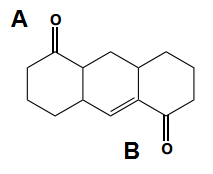Infrared (IR) spectroscopy is a powerful analytical technique used to identify molecular structures based on their absorption of infrared light. The key to understanding IR spectroscopy lies in two main aspects: the frequency or wave number at which a molecule absorbs light and the shape of the absorption peak. This summary will focus on the wave numbers associated with various types of bonds, providing a foundational understanding of IR spectra.
The IR spectrum is typically plotted with wave number (in cm-1) on the x-axis and percent transmittance on the y-axis. The spectrum is divided into regions, with the fingerprint region (below 1500 cm-1) often excluded from basic discussions. The double bond region extends from 1500 to about 2000 cm-1, while the triple bond region spans from 2000 to 2500 cm-1. Bonds to hydrogen (H) are found beyond 2500 cm-1.
In the double bond region, the absorption for a carbon-carbon double bond (C=C) typically occurs around 1600-1650 cm-1. The carbonyl (C=O) group is particularly significant, with its absorption generally around 1700 cm-1. Different types of carbonyl compounds absorb at slightly different wave numbers, which can be remembered using the mnemonic "CORN":
- Acid chlorides: ~1790 cm-1
- Carboxylic acids and esters: ~1750 cm-1
- Aldehydes and ketones: ~1710 cm-1
- Amides: ~1680 cm-1
Conjugation, which refers to the overlap of p-orbitals allowing for resonance, typically lowers the absorption frequency by about 20 cm-1. For example, a conjugated ketone would absorb around 1690 cm-1 instead of the usual 1710 cm-1.
Another interesting concept is the "banana bond," which occurs in small, strained rings (like cyclobutane). These bonds can result in higher absorption frequencies, approximately 100 cm-1 higher than expected due to their unique spatial arrangement.
In the triple bond region, alkynes and nitriles absorb between 2100-2300 cm-1, with nitriles typically appearing at slightly higher frequencies than alkynes. Terminal alkynes, which have a hydrogen atom attached, will show an additional absorption at around 3300 cm-1.
When considering bonds to hydrogen, carboxylic acids exhibit two absorptions: one for the carbonyl (around 1750 cm-1) and another broad peak for the O-H bond, which spans from 2500-3000 cm-1. Aldehydes also show a similar pattern, with a carbonyl absorption at 1710 cm-1 and an additional peak for the C-H bond at around 2700 cm-1.
Hydrocarbons can be categorized based on their hybridization: alkanes (sp3) absorb around 2900 cm-1, alkenes (sp2) around 3100 cm-1, and alkynes (sp) at 3300 cm-1 for terminal alkynes. Amines and alcohols have overlapping absorption ranges, with alcohols typically showing broader peaks due to hydrogen bonding.
Understanding these key wave numbers and the associated functional groups will greatly enhance your ability to interpret IR spectra. As you practice identifying different molecular structures, focus on the number of absorptions and their corresponding values to build your confidence in using IR spectroscopy effectively.




